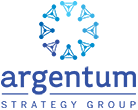In the 17 years since Argentum’s founding, I’ve been invited to judge dozens of pitch competitions. When listening to founders pitch their ideas, nothing makes my heart go pitter pat more than hearing a passionate, visionary founder talk about the real unmet need that they identified and figured out how to solve better, faster, stronger.
One of my all-time favorites was Matthew Rooda’s pitch for SwineTech, an AgTech company that he co-founded in 2015 to prevent newly born piglets from being suffocated by their mothers rolling on them.
As a fourth generation Iowa pork-producer, Matthew knew this problem had huge ramifications, not only for his family’s business, but for all commercial pork producers. Millions of piglets were dying this way every year until Matthew and his co-founder developed SmartGuard, their patented piglet-crushing prevention technology.
Identifying the Unmet Need for SmartGuard during a positioning session would be relatively simple because the product was specifically developed to meet a clear Unmet Need in the marketplace. This is generally true for most startups, which is why, when I’m working with earlier stage companies, we begin our positioning discussions with that element.
When developing any value proposition, clear articulation of the Unmet Need can be the “North Star” for stronger Target customer definition, and it’s also a key indicator when determining the Point of Difference.
As a reminder, the five key pieces of a strong positioning statement are Target, Unmet Need, Competitive Set, Point of Difference, and Reasons to Believe.
When larger organizations work with their creative agencies to do positioning work, the Target and Unmet Need are typically combined. This makes sense because Unmet Need is really part of the psychographics of the Target customer. In my positioning work, done in collaboration with my clients, I’ve found that the easiest way to help clients walk in their potential customer’s shoes is to talk about what they know their potential customer needs.
The key is that it is not about what the client wants their potential customer to need, or what the client wishes they could be “educated” to want. Rather, it is all about what the potential customer ALREADY knows they want or need. There are several different exercises I do with my clients, advisees, and students to help them nail down a relevant, authentic Unmet Need.
- Imagine someone is just waking up in the morning, or having coffee with a friend, or talking to a co-worker, and they say:
- If only there were a way to _____
- Wouldn’t it be great if we could ____
- Why can’t’ we ____
- It’s critical to speak in clear, easy-to understand “human” terms versus sounding like some sort of robot. For example:
- ROBOT: We want to turn our underutilized data into insights that optimize our asset and process-intensive operations
- HUMAN: We need to maximize the business we can do with our existing fleet
- Beers With Peers. When I’m teaching a class, I divide the group into teams of two. I ask them to imagine they’re sitting in a bar together. I have them tell each other the Unmet Need they’ve landed on for their business. If it sounds like something that someone would truly say, they’re on the right path. If it’s confusing or makes them laugh, it’s probably time to go back to the drawing board!
Understanding and identifying unmet needs is a crucial step in the positioning process, and it often serves as a compass for defining target customer and shaping the point of difference. By focusing on what customers already know they need, businesses can create value propositions that resonate with potential customers and make them more competitive in the marketplace.
To dive a little deeper into Unmet Needs, watch this Argentum video Using Human Words, and read this Fast Company article, Forget Information, Use This Instead.
